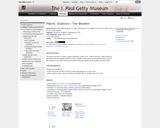
Students will practice using vocabulary associated with the weather and time of day.
- Subject:
- Arts Education
- Visual Arts
- Material Type:
- Lesson Plan
- Provider:
- J. Paul Getty Trust
- Author:
- J. Paul Getty Museum Education Staff
- Date Added:
- 02/26/2019

Students will practice using vocabulary associated with the weather and time of day.
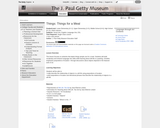
Students will build vocabulary and enhance language arts skills while learning about still life in a painting. Activities emphasize prepositions of location—through discussions about objects depicted in the featured work of art.
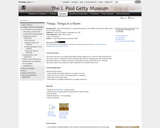
Students will build vocabulary and enhance language arts skills while learning about decorative arts.
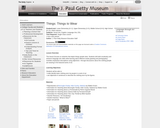
Students will build vocabulary and enhance language arts skills while learning about different media (painting and photography).

In this lesson students explore both the passion that inspired Picasso to take political action and the thought process behind the work. Students will reflect on their own decision making process when they feel compelled to take public action. This lesson will lead students to investigate the following Life-Long Learning Question: How does passion inspire public action?
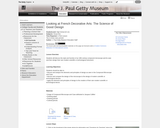
Students will discuss the style and function of an 18th-century compound microscope and its case and then design their own modern scientific or technological instrument. Students should be able to discuss and analyze the elements and principles of design as seen in the Compound Microscope and Case; discuss and compare the design of the microscope to the design of modern scientific or technological devices; and apply the elements and principles of design to the creation of their own modern scientific or technological device.
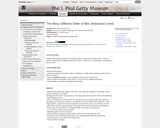
Students will be able to compare portrayals of individual soldiers to depictions of battle scenes and discuss the impact of each on viewers; analyze rhetorical strategies in two newspaper articles about a current war; write two different newspaper articles about a current war from different viewpoints; and create digitally or manually manipulated photographs.

Students will view Pistoletto's "Mirror Architecture" and consider why an artist might choose a fractured mirror to create a work of art; how the surroundings and the viewer interact with the sculpture; and how our perceptions of the piece might change in different locations. Students will write a story with the mirror as the central subject. Students will also write a short story which explores the symbolism of mirrors.

Students will be introduced to performance art and will consider its relationship to more traditional forms of visual art, such as painting and sculpture; consider the different ways in which performance art is documented; explore artists' construction of identities in performance and their adoption of signature materials and props.

Students will be introduced to the notion of ephemeral and site-specific art and will consider the role of the photo-documentation of these works; explore works that challenge traditional notions of where art should be displayed; be introduced to artists' strategies of institutional critique.

Students will consider artists' choices related to materials, line, color, and scale; consider artists' motivations for using repeated forms; compare and contrast industrially fabricated works of art with those made by hand.

Download and customize slideshows, worksheets, and other resources for use in the classroom or self-guided learning. Find questions, hands-on activities, and other opportunities for enrichment. Gain insights and inspiration from MoMA educators on teaching and engaging with modern and contemporary art. Sixteen (16) Unit Guides with individualized lesson plans are currently available.

The five lessons that comprise this guide may be used sequentially or as independent units. An introduction to the key principles of each lesson is followed by a close examination of the works, including historical context and information on the artist. Discussion questions based on the images lead students through formal analysis of the artworks and seek to create connections between information and visual evidence. The activities that conclude each lesson encourage students to synthesize what they have learned about the works, and carry the lessons into the broader curriculum or relate it to skills students are practicing in the classroom.
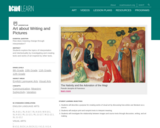
Students explore the topics of interpretation and intertextuality by investigating and creating texts and works of art inspired by other texts. Essential Question: How does meaning change through interpretation?
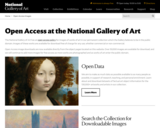
Access and download over 50,000 images that are a part of the National Gallery of Art's permanent collection.
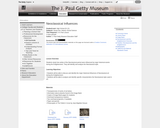
Students study how artists of the Neoclassical period were influenced by major historical events during the Enlightenment. They will identify and analyze the Neoclassical style.

Students will consider the challenges of representing identity visually; consider text and elements of popular culture in an image; continue to consider the role of drawing as a political medium.

Students will consider portraiture as a means of political expression; discuss the elements of a portrait that contribute to its meaning, such as expression, pose, costume, and background; consider the effectiveness of drawing as a form of political expression.

Students will compare and contrast two paintings; understand the term modern as used in an historical and art historical context; become familiar with the terms foreground, middle ground, and background.
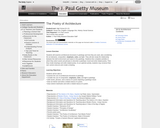
Students will examine architectural structures in paintings and how they are used, also considering the art elements, composition, emphasis, color, and light. Students will be able to examine the use of architectural structures in paintings; consider the use of composition, emphasis, color, and light in paintings; write words, phrases, and a stanza of a poem depicting a painting's mood; draw an interior and write a related stanza of a poem; and draw exterior landmarks and write a related stanza of a poem.